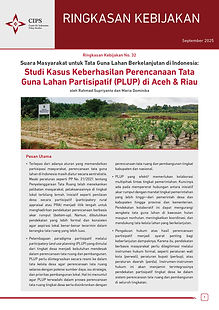Improving Indonesia’s Food Statistics through the Area Sampling Frame Method

Authors

Kadir Ruslan
One of the sources of policy bias against food commodities in Indonesia, particularly rice and secondary crops, is the low level of data accuracy. This situation has led to a surge in policy costs, both in economic and political terms. A paradigmatic example is the implementation of rice import policies that oftentimes provoke widespread public debate, when at the time official data show a relatively large surplus in national production. In 2018, for instance, despite national rice production surplus surpassing 10 million tons, the realized rice import figures reached 2.25 million tons.
This paper highlights shows how differing methods of data collection from various government bodies have led to an erroneous overestimations in Indonesia’s domestic rice supplies. The data, which is used in the decision making process for food policies, have impacted how much consumers pay for rice. The paper proposes modern data collection methods to capture a more accurate picture of staple food availability, and the challenges these proposed methods would face if implemented.













































